Since April is Occupational Therapy Month, our OT’s have put together a list of modifications that can help to decrease forces on hands and other joints. This chart has modifications that many people encounter daily. These adaptations will allow you to use less force which will avoid pain, prevent arthritic changes, and help to prevent deforming forces and injury.
Medication bottles
- Unscrew the medicine bottle caps and flip the bottle cap over and screw the cap back on. This setup requires less force to open the bottle, avoiding using force with the thumb. *Please note this method is not child-proof.
- Use a pill crusher to avoid pinching.
- Use a pill organizer to avoid opening multiple pill bottles daily.
|
 
- Medication organizer
- This can be purchased at stores many big box stores or online retailers
- Search “pill organizer.”

- Medication cutter
- This can be purchased at stores many big box stores or online retailers
- Search “pill cutter.”
|
Opening jars and lids
- Use rubberized grippers to open jars and lids to increase friction and take the stress off the finger and wrist joints.
- An adaptive jar opener, jar bottle pop, can opener, or soda tab opener avoids pinching and rotational forces on finger and wrist joints.
- Big box stores and online retailers have many options for adaptive openers.
|
- Grippers
- This can be purchased at stores many big box stores or online retailers
- Search “jar gripper.”
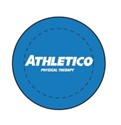
- Jar opener, bottle cap opener, soda tab opening and jar pop
- These can be purchased at stores many big box stores or online retailers
- Search, “jar opener.”
|
Meal preparation
- Purchase prepared food to eliminate time spent and energy preparing food.
- Purchase pre-cut or frozen fruit and vegetables to reduce the need for chopping food.
- Use kitchen scissors rather than tearing packages to prevent deforming forces on the finger joints.
- Use a pizza cutter to cut soft food instead of a knife to utilize an easy grip instead of chopping motions.
- Use a food processor and vegetable chopper to eliminate using a knife.
- If peeling, use a peeler with a large handle or one that can be slid over the finger
- Use non-skid surfaces and bowls with a rubber base to prevent slipping and use less force to hold a bowl in place
- Use built-up or weighted utensils to allow for an easier grip.
|
- Built up handles
- This can be purchased at stores many big box stores or online retailers
- Search “built-up handles foam.”
|
Office/work
- Use an ergonomic mouse to reduce stress on your hands and fingers by placing them in a neutral position rather than with the hand down.
- Use built-up or weighted pens/pencils to reduce the force needed to write.
- Use a keyboard that requires less force to depress keys.
- Use self-opening scissors to eliminate the force used to open the scissors.
- Keep your wrists flat and straight when typing. Let your wrist float, and to not plant them on a wrist rest or desk surface.
- Use talk- to-text or speech recognition software to avoid typing.
- Use a speakerphone, earbuds, or a headset to avoid holding a phone for extended periods of time.
|
- Ergonomic mouse
- This can be purchased at stores many big box stores or online retailers
- Search, “ergonomic mouse.”
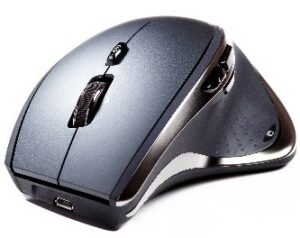
- Self-opening scissors
- This can be purchased at stores many big box stores or online retailers
- Search “self-opening scissors.”
|
Adaptive equipment and methods for dressing
- Use a built-up button hook if one-handed buttoning is required.
- Use a zipper pull to reduce the force on the fingers.
- Using a shoehorn will help decrease forward bending and reduce the amount of dexterity and force needed to don shoes.
- Use a sock aid and a dressing stick to help with dressing if there is limited motion in the back, hips, or shoulders.
- Perform all dressing tasks that can be performed seated to avoid loss of balance, especially when donning pants.
- If hip motion allows, don shoes and socks with your foot crossed over to the opposite knee to avoid back pain and forward bending.
|
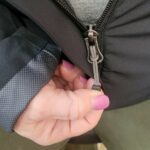 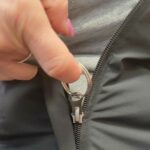
- Button hook with zipper pull.
- This can be purchased at stores many big box stores or online retailers
- Search “button hook.”
- Shoehorn and sock aid
- This can be purchased at stores many big box stores or online retailers
- Search “shoehorn” and “sock aid”
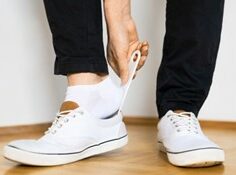
|
Rest breaks
- Break up tasks that are physically demanding on joints with rest breaks.
- Plan five minutes every hour for rest to give joints a break.
|
Household chores and design tips
- Pre-soak dishes to reduce the force needed to scrub dishes
- Break up cooking tasks to allow for rest breaks.
- Use built-up grip handles on tools to reduce the amount of force required during gross grasp.
- Install lever handles on doors rather than a knob to allow for one-handed use and avoid forceful twisting.
|
Use larger joints to prevent strain on smaller joints
- Slide objects on the counter instead of picking them up to decrease forces through the upper extremities.
- Use both hands when lifting heavy objects to distribute weight between both arms.
- Use a backpack instead of a handheld bag to utilize core muscles instead of smaller upper extremity joints.
|
Self-care
- Use an electric toothbrush with larger grip handles to make gripping easier.
- Use a scalp massager for washing your hair to avoid forceful use of finger joints.
- Use pump bottles or product dispensers instead of squeeze bottles with caps that require greater grip and pinch strength.
|
Seek the Help of a Hand Therapist
If you are experiencing any aches, pains, or injuries from your shoulder to your hand, consider hand therapy as a treatment option. Hand therapists at Athletico have specialized training in the treatment of arthritic conditions and injuries of the hands and upper extremities. Our hand therapists can tailor equipment, design and fabricate or suggest orthotics and splints, and recommend modifications that would be beneficial for your specific conditions, to allow you to participate in your daily activities.
Find a Hand Therapist Near You
The Athletico blog is an educational resource written by Athletico employees. Athletico bloggers are licensed professionals who abide by the code of ethics outlined by their respective professional associations. The content published in blog posts represents the opinion of the individual author based on their expertise and experience. The content provided in this blog is for informational purposes only, does not constitute medical advice and should not be relied on for making personal health decisions.









